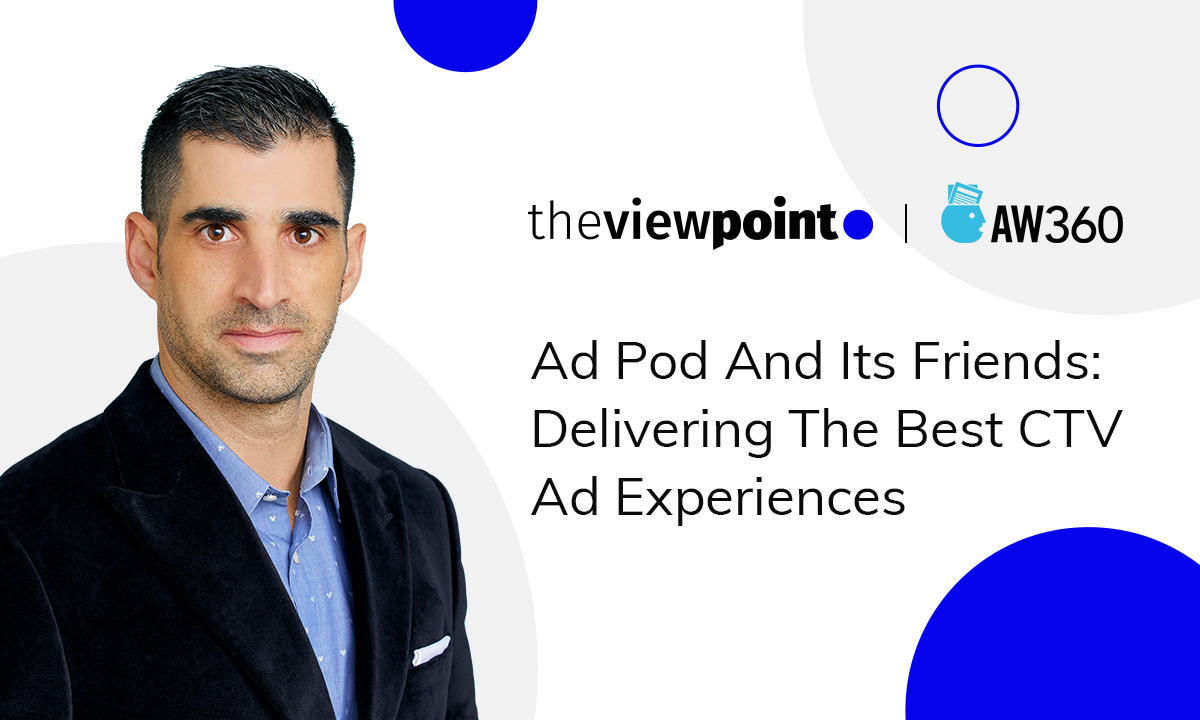
Origins and Pioneers of AdTech: 1990s-2010
When the first ad ever came out, marketers and customers were excited by the new technology in the world of advertising. TV and advertising technology is already changing by the minute, giving room for even more rapid innovations in the coming years. However, in order to prepare for the future, it is important to take some time to explore some key milestones in the history of digital advertising.
The 1990s
The first-ever form of programmatic advertising in the 1990s was a banner ad. Between 1993 and 1994, some major changes happened, creating a template that advertisers would build a solid foundation upon for decades to come.
Depending on where you read about this pioneering venture in online marketing history, people couldn’t seem to agree who brought the idea to life. Some believed that it was either AT&T or Silicon Valley law firm Heller Ehrman White & McAuliffe, while others still insist that Tim O’Reilly’s Global Network Navigator played a pivotal role.
All in all, the internet was taking off at neck-breaking speeds. Despite the growth, publishers still found it difficult to scale and manage hundreds of deals across many platforms and servers. The result? Tons of unsold ad inventory, which they couldn’t figure out what to do with.
In 1994, Lou Montulli and John Giannandrea gave us the much-appreciated cookies while working at Netscape. It was a humble beginning for such a significant portion of online advertising. With cookies, advertisers had all they needed to track user behavior on the network in great detail.
What happened in 1995 was even more fascinating. With the invention of the Internet Protocol Television (IPT) server and ad server, television viewing became more accessible. Before this time, people had to have a satellite dish installed on their home or business if they wanted access to live shows on TV. Now they could watch anything from anywhere in any room without needing anyone else’s permission.
The first IPTV server, the one that uses an IP-based network, was introduced by FocaLink Media Services by Dave Zinman, Andrew Conru, and Jason Strober. In the same year, JavaScript, a coding language that allowed websites/advertisers large control over how interactive content would function when someone clicked through one advertisement on another site, was introduced to the world.
Once online display ads became targeted, WebConnect started its cooperation with customers to find out which platforms are attended by them most regularly and make certain conclusions to drive more motivated decisions. To remind you, WebConnect is an advertising agency that enables the safe transmission of information between servers or devices. It was actually the initial advertisement network. After analyzing the data obtained, the company began to place commercials on platforms where they were most likely to be seen by target users.
WebConnect became the first advertising network in the world to provide advertisers with more exposure than they could ever get on their own. It summoned 160 sites and placed ads from those publishers who had signed up, preventing banners that were too similar to one another from boring their audience. In the same year, advertisers bought inventory and paid through the popular cost per thousand impressions (CPM) model.
In 1996, three brilliant minds, Kevin O’Connor, Dwight Merriman, and Fergus O’Daly, started DoubleClick, which quickly became an ad network for publishers to sell their inventory directly. They used cookies to track user history, which enabled them to serve ads relevant to viewer interests. Yahoo started displaying search results on their server in the same year.
The years 1996 and 1997 marked the revolutionary early days of online advertising. It was a low-cost and rapidly growing industry that also created new challenges for both advertisers, who had to deal with barriers like fierce competition and limited space on the web pages they wanted their ad at the front of.
Buyers looking at all these competing networks offered their products and services, which sometimes overlapped. And then came along a much-needed solution, the first major hub emerged where people could go shopping during what was called “media buys.” This eventually turned into hundreds of different types of overlapping, yet still existing entities, scattered across various parts of the internet today.
By this time, if you interacted directly with a publisher, it was easy to know where your ads would show up- on their site. However, with ad networks packaging and selling leftover inventory from many different sites in bulk deals without any transparency or fair pricing for advertisers vying over the same space, there came several issues such as identifying what format an advertisement was being served.
Though it may have taken some time to get used to, advertisers found that these new advertising platforms offered many benefits. For one thing, they could drastically reduce time spent on building relationships and participating in negotiations by targeting ads only toward certain categories of inventory from many different publishers. This could be achieved with advanced metrics insights.
In addition, there was no need for a middleman such as an agency or broker since platform owners took care of both sides.
The introduction of ad networks had a significant impact on the publishing industry. It enabled small to medium-sized publishers to establish relationships with larger advertisers.
In 1997, the so-called Request for Comments (RFC) was released. This memorandum was published by the Internet Engineering Task Force after the discussion of cookies at a couple of the United States Federal Trade Commission gatherings. This act either did not allow third-party cookies at all, or at least not enabled by default. Netscape, known as the former organization trying to capitalize on the emerging internet, did not accept the novelty.
The years 1998 to 2000 saw the birth of many innovative advertising networks. Companies could now advertise on multiple platforms. With the pop-up and PPC explosion, we saw a sudden rise in revenue from advertising. Marketers also noticed that banner ads were not working as well as before, so CTRs had begun to decrease, which further emphasized the need for new ways of advertising online.
Early 2000s
The year 2000 welcomed Google’s newest release, AdWords. Adwords is a programmatic advertising platform that was originally launched with 350 advertisers. The only requirement for this new service was that the campaigns had to run within the Google network.
The following year gave a start to the free ad-blocking browser extension Adblock 0.1, which after various transformations and controversies, including ad filtering and ad whitelisting, continues working today and is better known as Adblock Plus (ABP).
In 2002, Applied Semantics created AdSense then Google acquired and launched AdSense in April 2003. The Google AdSense network developed an incredible new form of pay-per-click (PPC) marketing.
Another significant milestone in 2002 was Anthony Wood founding Roku to design media players. Wood had had previous experience inventing the DVR (Digital Video Recorder). Later on, Roku would transform into what we know it today — a streaming platform, owning Roku software and hardware players, who tops the US CTV device market to this day.
The early 2000s were also a time of struggles found in ad networks. They either had too much or not enough inventory. In 2003, Piggybacking became more popular and pesky redirects caused some ads not to load at all – these problems became worse than ever until Google came along with their new algorithm that would eventually bring order to this chaos.
In 2002, there was another important event taking place. Google AdSense decided to start serving contextual advertisements on various websites. This practice showed amazing results within a relatively short period of time. By 2005, this activity rose to account for roughly 15% of the Google AdSense general revenue.
From 2003, the next milestone would come in 2005, when Netflix was launched and soon after, ad exchanges became popular (AdECN or RightMedia are two worthy mentions). Ad exchanges were either under or overfilled with ads for companies who wanted their message out there too.
In 2005, one more thing happened. YouTube, the most famous network for sharing videos and capitalizing on them, showed up to the wider public. This video ad service started to show advertisements a year after. Google found this project quite promising so it decided to buy YouTube for $1.65 billion.
In 2006, AdMob was founded. At this time, it was better known as a mobile advertising company that sold advertising space on mobile phones before the smartphone revolution. That’s because the first iPhone was released a year later and it became an instant hit with consumers around the world because they were able to access the internet via a pocket-sized device.
One more event that cannot be ignored is Outbrain, which is an adware network that offers all types of ads on desktop computers or mobile devices, targeting relevant content to key audiences. In addition to this, It applies smart algorithm-based tech to target its users.
2007 saw Netflix streaming and the internet bringing about a new era of entertainment. Interestingly, the same year Google acquired DoubleClick, Microsoft bought AdECN (Advanced Digital Campaigns), and Yahoo! purchased RightMedia for $700 million; it was clear that these companies were looking beyond traditional advertising methods in an effort to reach their customers more authentically.
The same year, Roku’s Anthony Wood became a vice president at Netflix. His main project was building the Netflix Player to stream Netflix content from the internet straight to users’ TVs. However, Netflix’s CEO decided not to compete on the hardware market. Thus, the player was obtained by Roku and soon rebranded as the Roku Player.
In 2008, the Facebook network introduced Beacon which relied upon code installed on third-party partner websites that collected information about user activity. This caused quite a bit of controversy especially since most people had no idea what was happening behind closed doors. It was shot down in 2009.
Around this time, real-time bidding (RTB) was introduced. Real-time bidding simply refers to when advertisers are able to buy individual impressions on websites through an auction. Demand-side platforms like MediaMath started emerging as well, with the ability for marketers and brands, both large or small in size all over the world, to reach their desired audiences.
In the process, RTB networks helped them precisely target those people most likely to make purchases based on insights gathered by extensive data analysis.
It was also in 2008 that Hulu was launched for public access in the United States. However, it only displayed its major advertising for the first time in 2009.
Google AdSense obtained new features back in 2009-2010. For instance, the opportunity to activate numerous networks at once to show commercials. One more great add-on was search history in contextual matching to suggest more relevant advertisements to an audience.
So, to sum it up, 2007 to 2010 was a good time for Yahoo’s Right Media, Google AdEX, Microsoft AdECN, and other ad exchanges to start building RTB software that works as a DSP (demand-side platform), SSP (supply-side platform), and ad exchange for online display advertising and programmatic buying/selling.
Conclusion
Programmatic marketing has changed a lot since the first ad ever, with digital advertising technology that simplifies the relationship between advertisers and publishers in a network.
Programmatic is all about automation and this trend began with the intention to free up people’s time. Programmatic will continue its rise in popularity as long as it continues to be useful for marketers. While we’re not quite sure what they’ll do with VR, IOT devices, or HUDS yet, we can be sure that marketers are always going to find new and better ways to get impressions on any ad network.
With the rise of AI, big data, and accurate audience segmentation, DSPs will have a lot more information about their prospects to bid for impressions. The ad experience will therefore be reasonably personal as DSPs can provide highly targeted ads that users want to see.
Related
Programmatic TV Tax Day is Not Just April 15. It's Every Day
This blog examines the significant "AdTech tax" in Connected TV advertising, advocating for Tatari's direct integration with publishers to bypass hidden fees, resulting in substantial cost savings and enhanced transparency.
Read more
Ad Pod And its Friends: Delivering the Best CTV Ad Experiences
Aiming to stand out from the crowd and surpass consumers’ expectations, CTV advertisers have to be allied with publishers and very savvy at applying innovative advertising techniques, like frequency capping, competitive ad separation, and deduplication. Though still raising a lot of eyebrows, these tools have already become the next big thing in the advertising world. So, before diving deep into the details of ad pod management, let’s take a sneak peek behind the scenes of modern CTV play.
Read more
Everything You Need to Know About Real-Time Bidding
As programmatic advertising is gaining momentum, RTB or real-time bidding comes in. In fact, most platforms in ad tech today are RTB enabled. But what does that actually mean? What is an RTB platform and why is it so important for digital marketers? Let’s get the answers to these questions and more.
Read more


